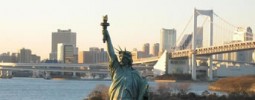Beograd (Београд), the capital of Serbia sits on the Balkan Peninsula, at the junction of the Sava and the Danube Rivers. The city is home to 1.6 million people and is the major hub for trade, communications, science and technology and tourism in Serbia. The city, popularly known as Belgrade, is known to locals as Beograd, its historical name. Belgrade is the largest city in Serbia after Novi Sad.
Beograd Serbia enjoys its location in the middle of the other Serbian towns and cities, making it easily accessible from any point in Serbia. Beograd locals, no stranger to the woes of the Balkan wars, are a hardy group whose hospitality is unsurpassed anywhere in the Balkan Peninsula. The people of Belgrade are slowly transforming their city into a center for entertainment and commerce, a place where locals and visitors can soak up the Mediterranean sun while lounging in seaside cafes during the day and revel in the vibrant nightlife after sundown, with parties spilling from the city’s trendy bars to the boats moored on the river, and where music floats until the sun breaks from the Bohemian enclave.
Public transportation leaves much to be desired in Beograd, although tourists can also hire rentals for a more personalized experience of the city. Those who are new to Serbia may also feel safer traveling by taxi or bus. It is better to be careful when going to public places which are notorious for pickpockets and thieves like the Republic Square and train stations. The best time to make your visit is between late spring and early autumn. Winter visits are also good, since winters in Belgrade can be cold but not harsh.
American citizens do not require a Visa to enter Belgrade. A valid passport is all that is needed for a stay in Belgrade for no longer than 90 days. Tourists are required by law to register with the Serbian police within 24 hours after entering the Serbian border.








